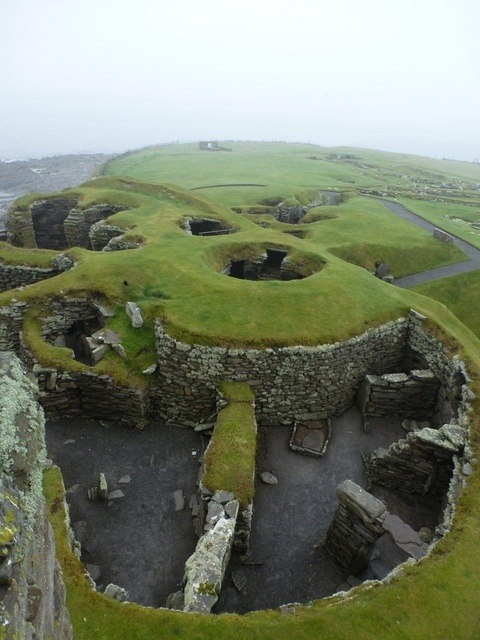(via wasbella102)
Jarlshof: looking down into a round house near to Sumburgh, Shetland Islands, Great Britain
The archaeological site at Jarlshof represents over 4,000 years of continual human habitation. The earliest remains are of Bronze Age buildings from around 2500-2000 BC; Iron Age round houses date from between 200 BC and AD 800; a Viking settlement from the 9th to 14th centuries stands towards the eastern side of the site; and finally the castle, the Laird’s House, stands in the centre of the site and was converted from a medieval farmhouse to a fortified residence in the 1500s.
Similarly to Skara Brae in Orkney, the Jarlshof site was hidden until a storm in the late 1800s expsed some of the remains. Archaeological work in the 1920s and 1940s/50s revealed the full extent of the site.
Here, we stand on the top floor of Jarlshof: the Laird’s House and look west over the later Iron Age buildings, larger and more advanced than the earliest round houses on the opposite side. It is easy from here to appreciate the term ‘wheelhouse’ used for these buildings - built in circular fashion around a central hub with storage areas and small rooms leading off it.

No comments:
Post a Comment